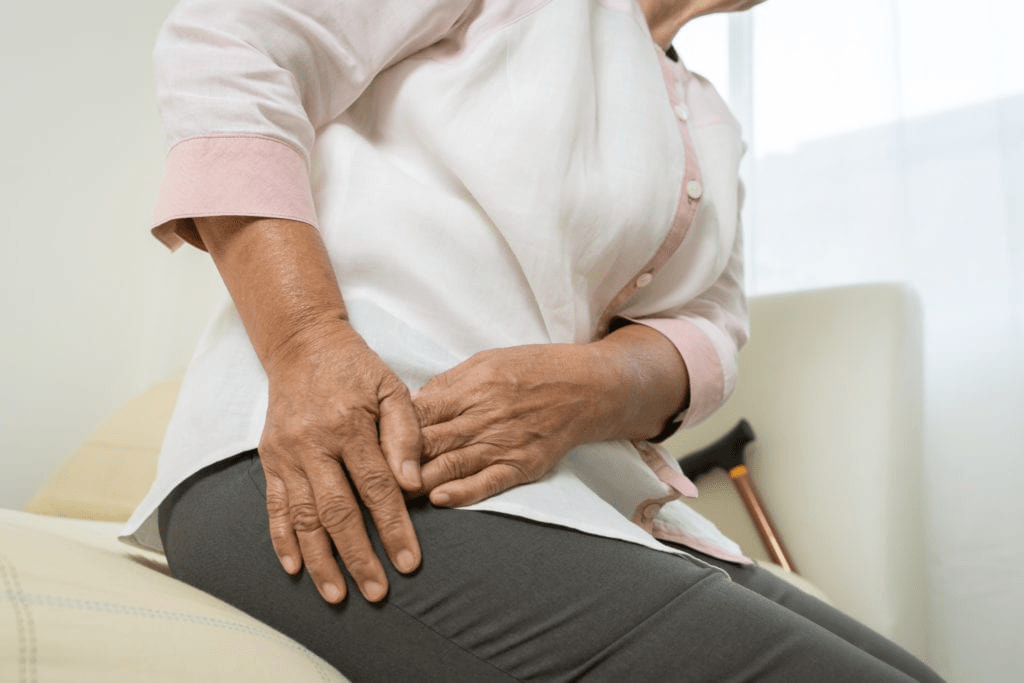
How to Relieve Lower Back and Hip Pain with Expert Advice
If every morning, as you roll out of bed, you’re greeted by a familiar discomfort- then you are one of the 39% of U.S. adults who struggle with pain in the lower back and hip.
But this isn’t just about physical discomfort, the pain can significantly impact your mobility, making it difficult to do the things you love. Whether it’s taking a walk, playing with your kids, or simply getting through your daily routine, pain can hold you back.
Unlike other types of body aches, this one is more stubborn and requires an expert’s intervention. In this article, we’ll explore how you can relieve hip and lower back pain by consulting orthopedic professionals.
👉 Also Read: 5 Desk Exercises You Can Do at Work to Reduce Pain
The Reason Behind Pain and How It Impacts Your Life
Burning pain in the hip and lower back is an unwelcome companion that can manifest in various forms. While some people experience it when they move, some complain about having a constant ache.
If you’ve found yourself wincing with each step or adjusting your posture to relieve pain, you must understand the reason behind it.
Abdominal Muscles Strains and Sprains
Overexertion, improper lifting techniques, or sudden movements can strain or tear muscles in the lower area of your body, leading to pain and stiffness.
Herniated Disc
When the soft cushion between vertebrae in the spine (disc) bulges or ruptures, it can press on nerves, causing severe pain, numbness, and weakness in the core muscles of the lower back.
Sacroiliac Joint Dysfunction
The sacroiliac joint connects the lower spine to the pelvis. Inflammation or misalignment of this joint can radiate pain to the lower back and thighs, making it difficult to walk and stretch.
Sciatica
This condition of the back is prevalent and involves irritation or compression of the sciatic nerve, the longest nerve in the body. Sciatica typically manifests as a sharp, shooting pain that radiates from the lower back down the leg.
Aside from the above-mentioned reasons, there are several other causes of lower back and hip pain. It’s indispensable to see a physical therapist to understand the root cause of the pain and the viable treatment options.
👉 Also Read: Can Chiropractic Care Help with Sciatica?
Beyond the physical discomfort, muscle pain in the lower and upper body can affect your life in the following ways:
- Simple tasks like walking, climbing stairs, or getting up from a chair can become challenging and even painful.
- Pain can disrupt your sleep patterns, making it difficult to fall asleep or stay asleep throughout the night.
- You may find it difficult to concentrate at work, participate in social activities, or enjoy hobbies you once loved.
- Chronic pain can contribute to feelings of anxiety, depression, and frustration, impacting your overall well-being.
Expert’s Advice for Managing Lower Back and Hip Pain
Pain can be a major hindrance to your daily life, limiting mobility and impacting your overall health. While seeing a healthcare provider is crucial for proper diagnosis and treatment, there are also steps you can take to manage the pain and improve your quality of life.
Here are some expert-backed tips:
Self-Care Strategies
Rest
Sometimes, complete inactivity may not be possible, so taking breaks from strenuous activities alleviates pain and allows your body to heal. Listen to your body and prioritize rest during flare-ups.
Gentle Movement and Stretching
Regular, low-impact physical therapy exercises like walking, swimming, or hip flexor stretch can improve flexibility, and promote blood flow to the affected area. Sit on an exercise ball with your knees bent and feet flat on the ground to experience pain relief.
Additionally, tighten your stomach muscles and gently lift your left leg slightly above the floor, maintain the posture for a few seconds, and do it with the other leg to reduce severe symptoms.
Lifestyle Modifications
Maintain Good Posture
Standing tall with your shoulders, back, and core engaged helps distribute weight evenly, reducing muscle strain on your hip flexors. Be mindful of your posture throughout the day, whether sitting, standing, or walking.
Ergonomics Matter
Ensure your workspace is ergonomically designed to promote good posture, especially if you sit for extended periods. This may involve using a supportive chair, adjusting your computer screen height, and taking frequent breaks to move around.
Seek Professional Help
If the pain in hip muscles is severe, persistent, and worsens with self-care measures, it’s recommended to consult Alliance Orthopedics. We can assess your condition, diagnose the underlying cause, and recommend personalized treatment options. This may include:
Physical Therapy
We devise a tailored therapy program to help strengthen your core pelvic floor muscles for improved flexibility and to restore normal movement patterns.
Chronic Pain Management
Depending on the severity and intensity of the bone pain, our team may prescribe minimally invasive treatments such as chiropractic care, physical therapy, and more.
Surgical Intervention
In some cases, minor surgery may be necessary to address specific issues like a herniated disc or severe hip joint damage. Our medical centers are fully equipped to provide advanced interventional procedures for back pain.
👉 Also Read: How to Prevent Back Pain While Working from Home
Don’t Let Lower Back and Hip Pain Ruin Your Life: Contact Alliance Orthopedics
The earlier you take control of the pain, the sooner you can get back to enjoying your life. At Alliance Orthopedics, we offer personalized solutions for pain management through interventional and non-interventional treatments.
From the moment you walk into our outpatient clinic, you are assisted by a team of professionals committed to making your life pain-free.
Make an appointment with us for a complete diagnosis, and embark on your journey to a healthier, better every day.